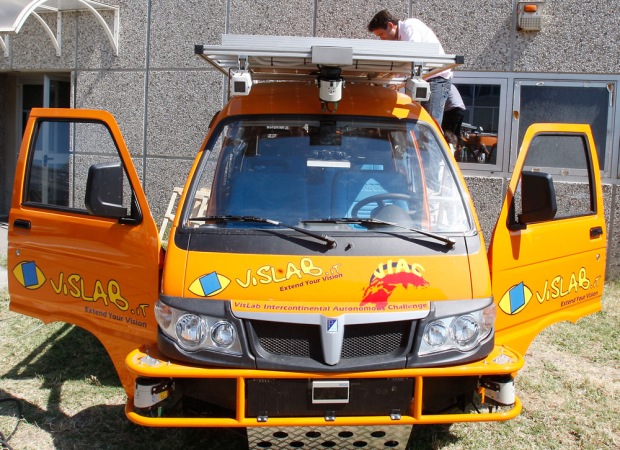
You probably remember DARPA’s Grand Challenge, which required autonomous vehicles to navigate from one point to another without human intervention. That’s probably the most well-known example of this kind of research (hundreds of entries and millions of dollars went into it), but just because it’s not going on any more doesn’t mean that research has stopped. One project, based in Italy, is looking into the possibility not of cars that simply drive themselves, but cars that follow one another yet can react to unfamiliar “stimuli.” Think of a caravan of robots with a human at the front.
The project has been in the lab and driving around locally for some time now, but they think it’s time to take it to the next level. The project lead, Alberto Broggi, said:
What we are trying to do is stress our systems and see if they can work in a real environment, with real weather, real traffic and crazy people who cross the road in front of you and a vehicle that cuts you off.
He puts driverless vehicles at about 20 years off, which seems like a long time to me. But 10 years is way too soon. I’m going with 15.
The project will be two pairs of vans, with the robo-vans following the driven vans — which will be carrying technicians in case the robo-vans break down. Since they’ll be driving on populated roads and the chances of error and danger are pretty high, there will be a driver in each robo-van as well, waiting to take over at the push of a button. They intend to drive all the way from Parma, Italy, to China — at between 30 and 37MPH, which is about as fast as the vans can go.
Sounds pretty cool to me (and a bit like a Top Gear episode), but it probably will get pretty boring being the backup guy during the long stretches.
[via Techdirt; image: Antonio Calanni/AP]